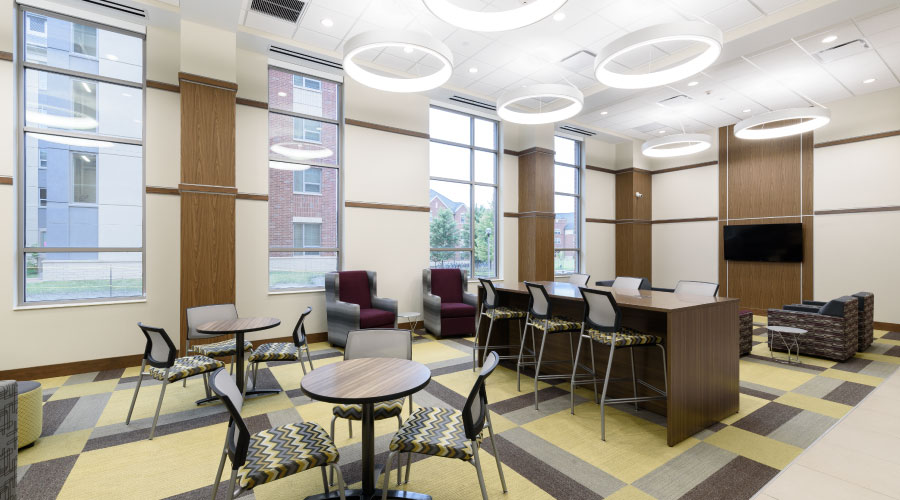Solve Lighting Quality Problems By Letting Space Guide Technology
One reason lighting quality problems arise is that technology sometimes drives lighting design, rather than the needs of the space guiding technology selection. Office spaces should be looked at on a case-by-case basis, says Emad Hasan, project manager for The Lighting Practice. For example, there's a push in the industry to use LEDs, says Hasan, but another type of light might be a better choice in some instances. A lighting designer can help facility or project managers sort through various products and help them meet the requirements for light distribution, color, and glare avoidance.
That's not to say that the use of new products is a bad thing. Consider the re-acceptance of bright light sources. "Twenty-five or 30 years ago, there was a movement to eliminate lens luminaires because they created bright spots reflected in the convex lenses or screens on early computers," says James Benya, director, Advanced Lighting Design Program, California Lighting Technology Center, University of California at Davis. "The recommendation was to use well-shielded luminaires or indirect lighting systems with highly uniform ceiling luminescence. But the modern flat screen computer is not subject to glare." Because it doesn't matter as much today whether lighting is direct or indirect, says Benya, a renaissance is going on in lensed lighting fixtures — for example, lensed fixtures recessed in the ceiling.
"We are seeing a change in fixture design," says Hasan, "with wider distributions [of light] to allow for increased spacing, and changes in lensing technology that make light softer to look at." New lenses are volumetric and push light further up the walls to make the space feel brighter, rather than pushing more light directly down.
Lighting and Circadian Rhythms
Lighting is going through a color renaissance, says James Benya, director, Advanced Lighting Design Program, California Lighting Technology Center, University of California at Davis, and understanding the relationship between light and wellness is a new area of study.
"We now know how important the human circadian system is in terms of health and wellness, and light is the single biggest thing that affects it," he says. "The more we discover about circadian rhythms, the more [that knowledge] will affect lighting systems, ceiling systems, and architecture." Daylighting naturally reinforces the circadian system, so giving access to views and sunshine is even more important than people thought, he says. "[Employees] need to get enough natural light exposure so that they aren't falling asleep in the middle of the afternoon."
While some lamps are touted as being good for the circadian system, it's not simply a matter of changing the color of the light, Benya says. The factors that affect the circadian system are spectrum of light, intensity of light, timing in the circadian rhythm, and the duration of exposure to the source of light. Some light solutions may cause problems. Radically changing the color of light from the red/yellow band of the spectrum to the blue band reduces light in the space and creates a murky environment where people lose energy and attentiveness. Research is key before installing a new product or technology.
– Maryellen Lo Bosco |
Related Topics:














